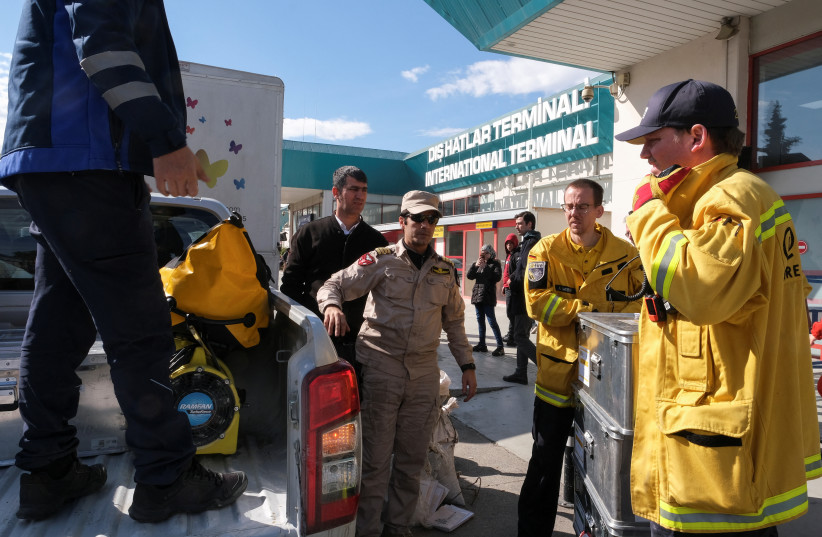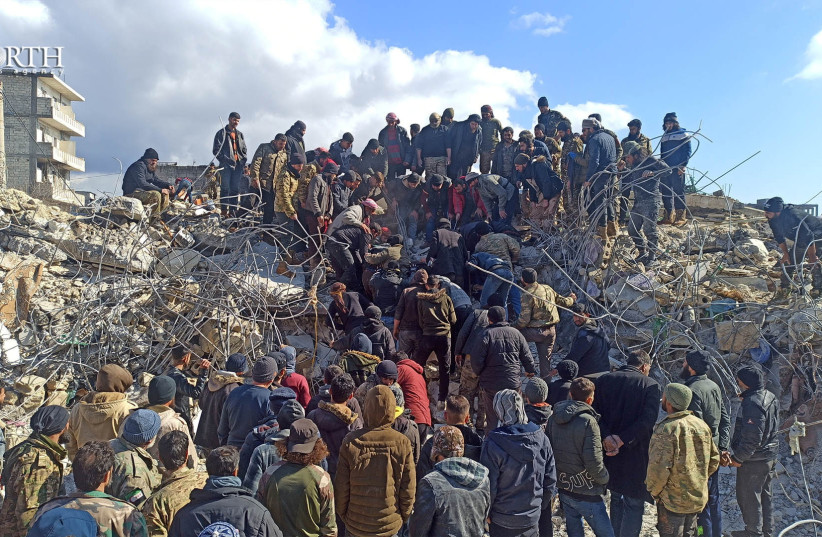Aid organizations, both local and international are trying to get aid into Syria in the wake of the earthquake. While most aid efforts are concentrated in Turkey where the earthquakes took place, aid is also flowing into Syria, where the ongoing conflict and divisions on the ground make this effort more difficult.
Time is of the essence because to find survivors trapped under rubble it is important to get to them within the first days after they become trapped.
Furthermore, the areas of Syria affected have already been destroyed by years of war and there are millions of displaced people and towns and cities with buildings that are already vulnerable to collapse. This area lacks basic things like equipment to dig people out safely and water and electricity may be in short supply. Border crossings with Turkey also appear to either be closed or barely functioning and people are waiting to see if they will be opened for humanitarian corridors.
By the afternoon of February 7, some 36 hours after the earthquake, reports said that the death toll in areas of northwestern Syria held by Syrian opposition groups and Turkey was more than 1,000. However, it is difficult to know if those estimates are accurate or who is providing official figures.
In Syrian regime-controlled areas. Syrian state media said the death toll was 1,602 by the afternoon but it was unclear if this included Idlib, Afrin and other areas under Turkish control. However, it appears the number of dead being found is rapidly rising because it had only been officially 700 in the morning. Either way, what is clear is that the toll is rising and the absence of aid is making it more difficult to know even basic details from the ground.

In eastern Syria, reports said the AANES, the autonomous local authority, was seeking to send aid trucks to the affected areas. It was unclear if these trucks would be permitted to transit to areas like Afrin, where Ankara and militias are in control. Regional rivalries make aid delivery complex.
A person knowledgeable about the situation on the Syrian side of the Turkish border said there was no major aid crossing as of Tuesday afternoon, but that reports said the border gate may have opened by Tuesday evening.
While groups like the White Helmets were doing the best they could, they also lacked the necessary equipment. A source said that more than 2,000 had been declared dead already and local hospitals were taking the wounded that they could. One image on social media showed an unnamed hospital full of dead bodies, noting that they were out of space. As time goes by this becomes a health issue if people are not buried. In addition, people are stuck outside and exposed to cold weather during a winter storm.
The sense in Idlib and other areas near the border, such as across from Kilis, is that the Syrian regime areas are also in bad shape but may be relatively better off. In addition, a plethora of aircraft arrived in Damascus on Tuesday from a number of countries, seeking to bring aid. It will take time to get aid to places like Aleppo.
With no aid, Syria watches time run out
The source said that until now there was still no aid entering, and this made sense because it had taken time for aid just to get to Turkey. This means the aid will be too late for people who are most in need. The logistical difficulties and weather also make it difficult to get aid to the border, and aid must traverse areas that were badly hurt in Turkey, such as Antakya and Gaziantep. It is hoped that Tuesday evening aid will begin to move into Syria from Turkey.
Unfortunately, because people need assistance in the first 72 hours after a disaster like this, already some 40 hours have elapsed. It is impossible for the locals to get to survivors in collapsed buildings. They don’t have equipment. The question on Tuesday night is whether equipment will move across the border.
The White Helmets noted on Facebook that “we appeal to all humanitarian organizations and international agencies to provide financial support, assistance to the organizations responding to this disaster and to assist the earthquake victims urgently.”

Another post from a Syrian regime-affiliated medical official noted that some medical teams had saved people from the rubble and transferred them to a hospital. 40 hours of intense work had gone into saving these victims. The regime claimed that ambulances and medical convoys were moved quickly. It was not clear if this was an accurate statement.
Lack of border gates hampers aid delivery
There is a major problem in moving aid to Syria from Turkey because of the limited border gates. During the war, aid used to flow via Kilis which is near Gaziantep, a city badly damaged. Aid also came via Reyhanli, which is not far from Antakya, which is also badly damaged.
The Bab al Hawa border gate has become the only major crossing in the last years, a conduit to aid almost 4 million people, and it is reportedly damaged. While some say that aid could come from Aleppo to areas such as Idlib or Afrin, or Azaz, it is not clear how that could happen considering the divisions between the regime-controlled areas and the opposition or Turkish-controlled areas.
Reports by the Syrian American Medical Society said by Monday night some 350 had been treated at Bab al Hawa hospital. By Tuesday SAMS said the number treated in their facilities had increased to 1,473 injured and 237 recorded deaths. New cases were flooding in requiring help.
The head of the EU delegation to Syria Dr. Dan Stoenescu tweeted about the catastrophe in Syria. “As preparations are underway for more EU aid to flow into #Syria, we call on all parties to urgently open relevant border crossings and coordinate swift and unimpeded cross-line aid deliveries. Humanitarian aid should be borderless!”
